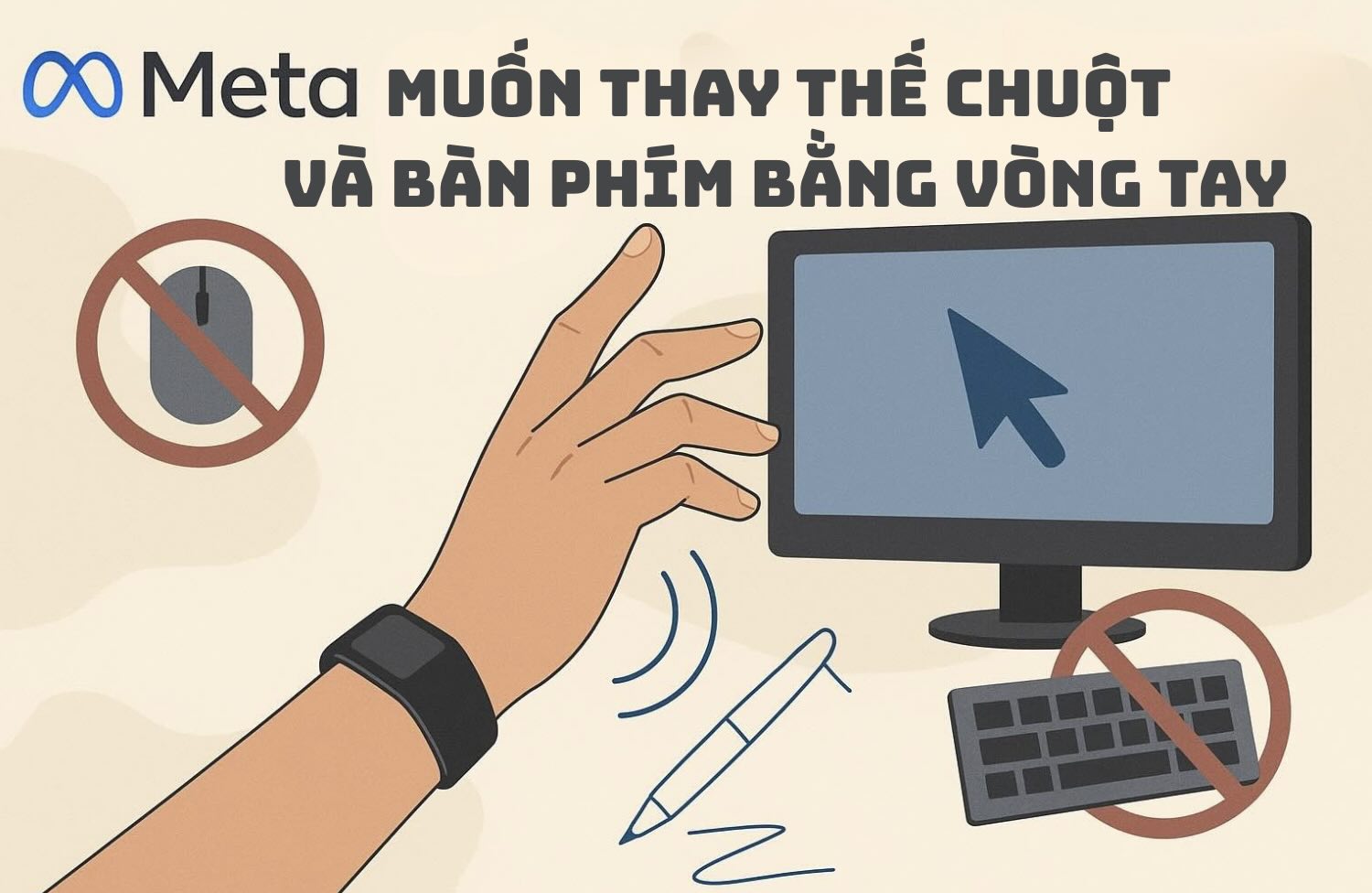
This ring not only helps users move the pointer or select items on the screen, but can also "writ in the air" to enter text. This technology promises to expand access for people with reduced mobility, while bringing a new way of interacting with digital devices.
In a study published in Nature this week, Meta's reality Labs group introduced the sEMG-RD. sEMG-RD bracelet, a bracelet that uses sensors to record brain-to-nerves signals that pass through the muscles, then convert them into electronic device control control numbers.
Meta has been pursuing the technology for years. In 2021, the company revealed the first prototype led by Thomas Reardon - Director of Mobilized Neuro Interface. At that time, they aim for a simple goal such as simulating a click in an enhanced reality (AR) environment. The work has just been announced as the next step for this research group.
In the world, many other units are also developing similar technology. For example, a 2023 system uses an air pressure sensor to identify 10 hand gestures, or a Mudra Band that allows you to control your Apple Watch through a neurotransmitter signal. However, Meta's solution is superior in both accuracy and versatility.
Users can not only control the pointer in a fixed direction like using a laser pen, but also have more flexible interactions such as: clenching your fingers to select, saving your thumbs to roll, touching your thumbs to confirm. In particular, the system also allows writing in the air at a speed of about 20.9m/minute - almost the same as the average when typing on the phone (about 36m/minute).
A noteworthy point is that the sEMG-RD ring does not need to be adjusted specifically for each person. The research team collected data from thousands of people, training deep learning models to accurately decode input signals, regardless of who is wearing the device. This allows users to wear and use them immediately without complicated setup operations.
reality Labs believes that in the future, the device will be more sophisticated, capable of recognizing the impact of gestures, opening up the potential for application for camera control, joystick or other digital devices. They also hope that sEMG-RD will help explore completely new forms of interaction, based on muscle coordination or motor signals that have never been exploited before.







